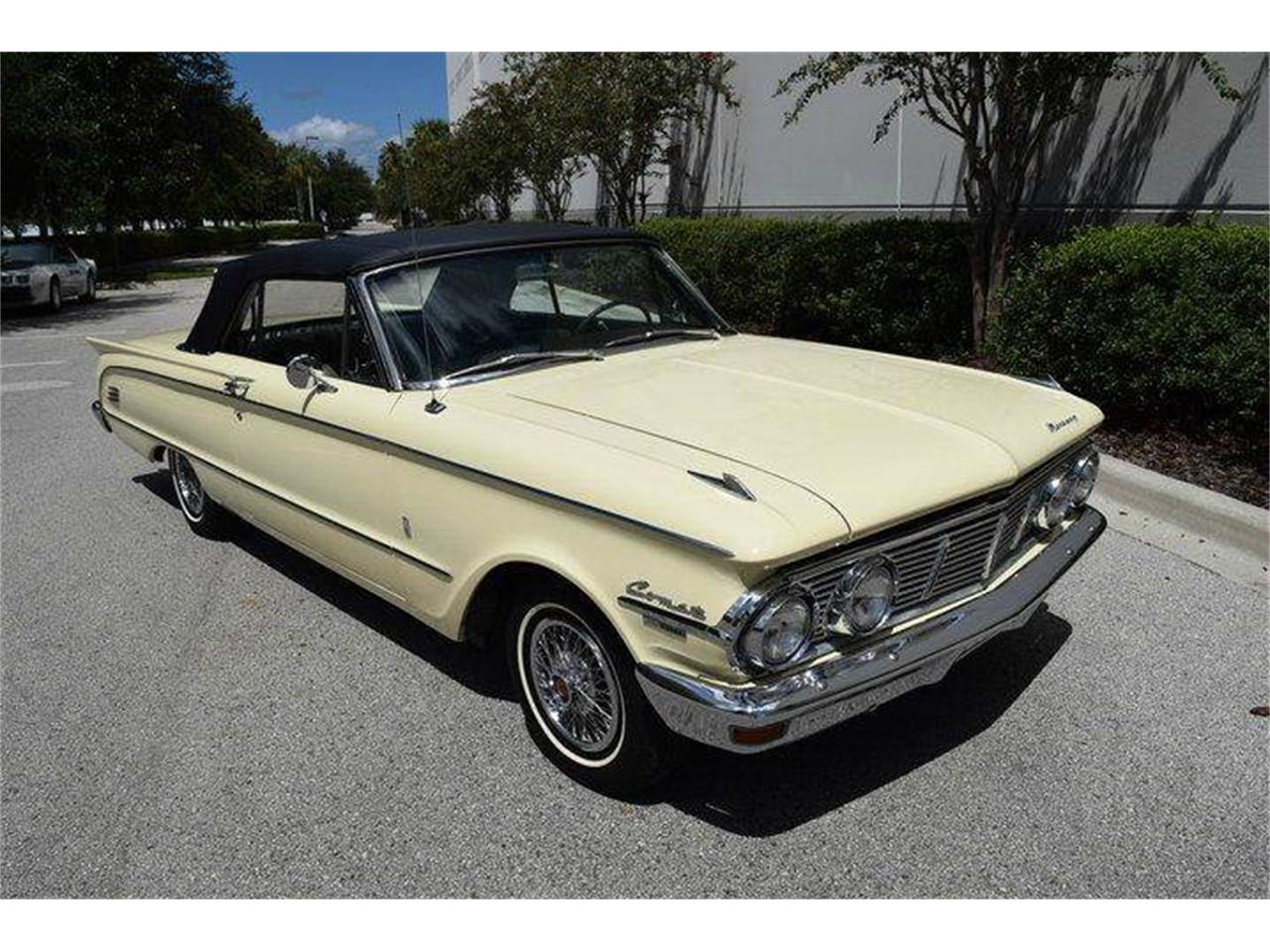
#1963 MERCURY COMET MANUAL#
One could call this second generation 1965 Comet station wagon a sleeper or a great grocery getter, as it's equipped with a hi-po 289 CI V8 that makes 271-horsepower and is backed by a four-speed manual transmission.įor the 19 models, yet another exterior makeover occurred. The two station wagons were called the Voyager and the Villager, with the latter having simulated wood side panels. So, the other subseries models became simply the Caliente, Capri, Cyclone, and Cyclone GT. With the 1967 model year, Mercury gave the Comet name only to the base model Comet 202. There was a two-door convertible, two-door sedan, two-door hardtop, four-door sedan, and a four-door station wagon in the model lineup. Just one engine was available those two years, the 390 cubic-inch big block V8. The third and fourth generation Mercury Comet obtained all new exterior styling and grew in size, as it now shared the intermediate platform of the midsized Ford Fairlane and Ford Torino. Third Generation (1966-1967) & Fourth Generation (1968-1969) Mercury Comet Designers took the horizontal quad headlights and stacked them vertically. The engine's backed by a Hurst shifter topped four-speed manual.Įxterior styling changes took place in 1965 as well. Here's the dual Holley four-barrel carb fed 427 hi-riser, side oiler racing engine that powers the seven of eight built drag racing car mentioned in the previous photo caption. Mercury built 50 high performance Comet Cyclones and campaigned them in the more modified A/FX class with dual carbureted 427 engines, so that the cousins wouldn’t compete against each other. The Comet’s cousin, the Ford Fairlane Thunderbolt, dominated drag racing’s super stock class. The car competed in the A/FX class and had fiberglass bumpers, hood, and doors to keep it light. This is number seven of eight built 1965 Mercury Comet drag racing cars, built by Bill Stroppe & Associates. Then the 289 CI V8 replaced the 260 mill early in the 1964 assembly line. They 86’ed the 144 CI base engine and replaced it with the 170 CI powerplant. Second Generation: 1964-1965 Mercury Cometįor 1964, Mercury considerably squared off the Comet’s exterior styling, making it look like a mini me version of the Lincoln Continental. Topped by a two-barrel carb, the V8 made a respectable 162 horsepower.
#1963 MERCURY COMET INSTALL#
Mercury made some changes to the suspension and the chassis, which made room to install a 260 cubic-inch V8.

It received some minor Mercury styling cues to the exterior to make it look like a Mercury. Engineers upped the horsepower of the engine to 101 by increasing its displacement to 170 cubic inches, as a result of customer complaints of not enough power.īy 1962, the Comet was officially badged as a Mercury Comet. The 1963 Comet convertible also looks classy with the top up.Īnother Thriftpower six emerged in 1961. Dubbed the Thriftpower by marketing executives, the engine had a Holley one-barrel carburetor and made 90-horsepower. Here's a nice first generation, 1963 Comet convertible that is equipped with a 260 CI V8, automatic transmission, power steering, power top, and AM radio.Īs with its sibling the Ford Falcon, the Comet was powered with one engine in 1960, the 144 cubic-inch straight-six cylinder powerplant. Over the Comet’s 17 years of production, 1.6 million were sold.

The car went from being a compact, or more accurately senior compact, to a true midsized vehicle by sharing the Ford Fairlane and Torino chassis’, and back to a compact by sharing the Ford Maverick platform. There are six distinct generations of Comets. It was sold as a standalone car at Lincoln-Mercury-Comet dealers. Mercury Comet History First Generation: 1960-1963 Mercury Cometįor the first two years of its production, the Comet didn’t have any Mercury division badging. Read on as we look back at Mercury Comet history across six generations, from 1960 through 1977. Having the benefit of 20/20 hindsight, many automotive historians now recognize the Comet as the first midsized car. Back in the day it was called a “senior compact”. Though still classified as a compact car, the Comet was a foot longer than the Ford Falcon. The Lincoln-Mercury division of Ford introduced a big sister car to the Ford Falcon in March of 1960 called the Mercury Comet. The lead photo is of a third generation, 1966 Mercury Comet convertible that sports a 289 CI V8, a C6 three-speed automatic trans, power steering, power brakes, a dual exhaust, has black bench front and rear seat interior, and is shod with Anthracite hued Boss five-spoke wheels.


 0 kommentar(er)
0 kommentar(er)
